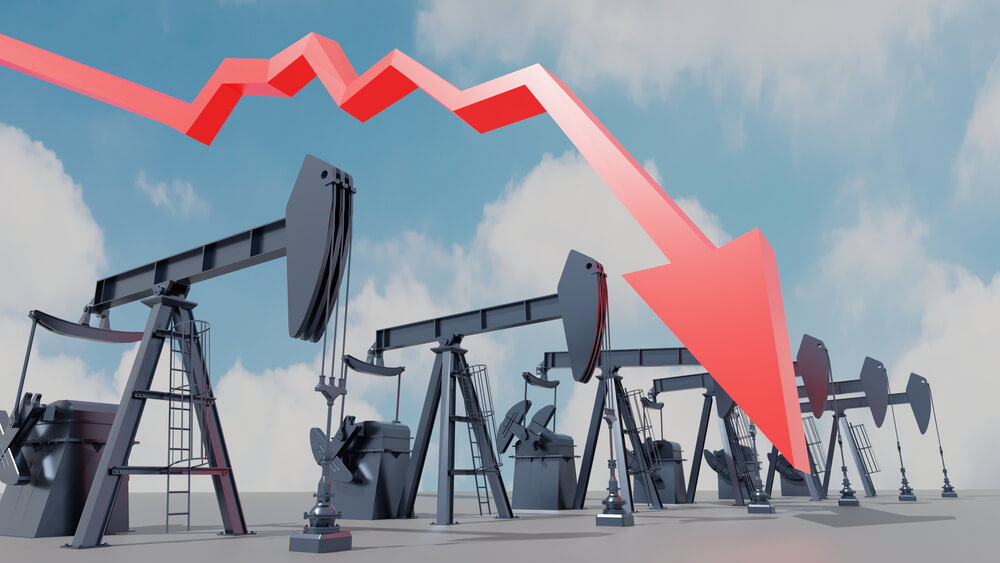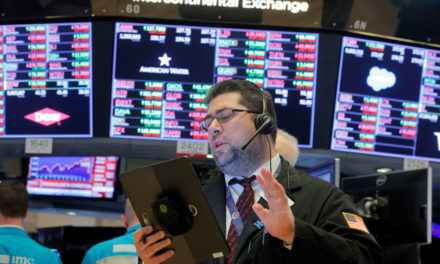U.S. President Donald Trump said that Saudi Arabia and Russia have agreed to cut oil production as part of an ongoing price war, and the news triggered a massive rally in oil prices. But will the oil price surge last?
“We’re building a giant slug of extra oil in storage that will have to get worked through.”
Trump made an appearance on CNBC, where he told host Joe Kernen that after talking to Russian President Vladimir Putin and Saudi Crown Prince Prince Mohammed bin Salman, he expects the two countries to soon cut oil production by at least 10 million barrels, which could be upped to 15 million.
Trump celebrated the news on Twitter, as oil demand has been rocked by the price war.
“If it happens, will be GREAT for the oil & gas industry!” Trump wrote in the Thursday tweet.
Just spoke to my friend MBS (Crown Prince) of Saudi Arabia, who spoke with President Putin of Russia, & I expect & hope that they will be cutting back approximately 10 Million Barrels, and maybe substantially more which, if it happens, will be GREAT for the oil & gas industry!
— Donald J. Trump (@realDonaldTrump) April 2, 2020
The announcement sent oil prices soaring across the board Thursday. Crude prices posted their biggest gains on record. Brent futures rose $5.20, or 21.0%, to settle at $29.94 a barrel, while U.S. West Texas Intermediate (WTI) crude rose $5.01, or 24.7%, to settle at $25.32.
Oil prices are still way off from where they started this year after losing half of their value thanks to the price war and reduced demand that has only been exacerbated by the coronavirus pandemic.
And there hasn’t been any evidence that the deal is done, either.
Saudi Arabia announced it will conduct an emergency meeting of the Organization of the Petroleum Exporting Countries, according to Reuters.
“The question will come down to, Will they be able to agree to something? It’s taken a couple of weeks of Brent at $25 and WTI at $20 and it seems as if the Russians are more approachable than they were a month ago,” Gene McGillian, vice president of market research at Tradition Energy, said in a Reuters interview.
Where Does the Oil Price Go From Here?
Banyan Hill Publishing’s Matt Badiali doesn’t think Thursday surge will last because demand for oil has cratered so much lately.
“Oil prices were up Thursday, but that won’t last,” Badiali said. “The big reason is demand is down way more than we can cut production.”
He went on to give an example of how much demand has been rocked in the U.S. alone:
“The U.S. is the world’s largest oil consumer at 20.5 million barrels per day. And of that oil, 45% of it gets consumed by personal vehicles. That’s roughly 9. 2 million barrels per day, used in the U.S. Anecdotal evidence shows us that folks aren’t driving. So, if we’ve halved our daily driving, that’s 4.5 million barrels of oil per day of lost demand.”
Badiali, Editor of Real Wealth Strategist, which is your go-to source for investing in natural resources, also notes that the “demand destruction” only pushes more oil into storage.
“So we’re building a giant slug of extra oil in storage that will have to get worked through before the price can return to equilibrium,” he said.
Where does Badiali see oil going in the future?
“Low prices are the cure for low prices. We’re seeing a lot of marginal production disappear and zero capital investment in new oil. Oil production needs new wells, because shale wells run out of oil in about 18 months. After that, the production drops way off. That means, in 12 to 18 months, we could see oil prices rocket higher as demand returns and the extra crude gets used up.”
Reuters contributed to this report.





